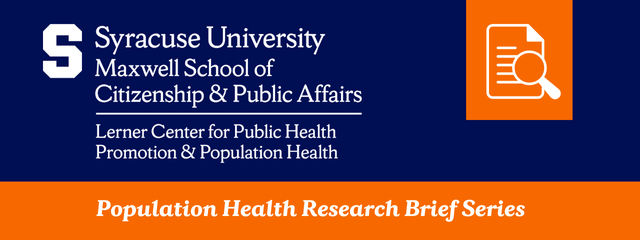Description/Abstract
By 2030, one in five Americans will be 65 or older. Rapid population aging in the United States is unfolding alongside a parallel trend of rising racial and ethnic diversity. In the coming decades, African American, Native American, Asian, Native Hawaiian and Pacific Islander, Hispanic/Latino, and multiracial groups are projected to experience significant growth in their proportions of adults who survive past age 65. Despite improvements in health and gains in longevity in recent decades, minorized groups continue to experience significant barriers to healthy aging. This brief provides an overview of the social determinants of healthy aging, provides recommendations for how policymakers can improve the socioeconomic, health care, and social, built, and physical environmental conditions that influence healthy aging, and proposes policies that can help the U.S. prepare to better meet the needs of its increasingly diverse older adult population.
Document Type
Issue Brief
Keywords
Older adults, race and ethnicity, population aging, social determinants of health
Disciplines
Gerontology | Race and Ethnicity | Sociology
Date
7-16-2024
Language
English
Acknowledgements
The authors thank Alyssa Kirk and Shannon Monnat for edits on a previous version of this brief.
Recommended Citation
García, Catherine, Brown, Lauren L., and Garcia, Marc A. (2024). How Can America Support the Health of its Diverse Aging Population? Lerner Center Population Health Research Brief Series. Issue Brief #70. Accessed at: https://surface.syr.edu/lerner/258/.
Creative Commons License

This work is licensed under a Creative Commons Attribution 4.0 International License.



